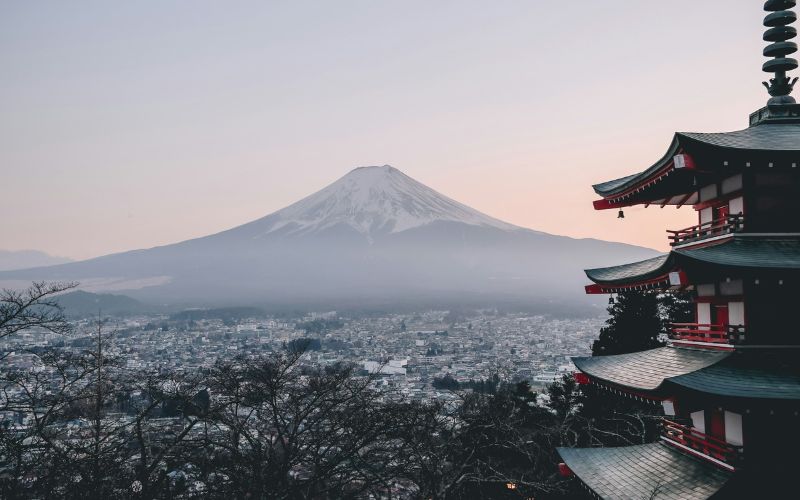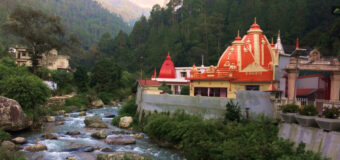The Japanese government estimates have shown that Japan had 4.4% more international visitors in July 2025 than in July 2024.
A depreciation of the Yen and renewed interest in anime have made Japan a major cultural hub. China and South Korea have been the two most important markets for the recent growth of the Japanese tourism sector.
However, Japan has always been a popular tourist attraction as Japan changes like four different countries depending on when you go. Spring? Blossoms everywhere.
Summer’s loud, sticky, and all festivals. Fall is calm, crisp, almost golden.
Winter feels like you’ve jumped into a snow globe. Honestly, the best time to visit Japan depends on what you’re chasing. I’ll just walk through the months, and you’ll see what I mean.
What Is The Best Time To Visit Japan? Why Is Every Season Special In Japan?

The best time to visit Japan depends on the kind of experience you want. April is famous for the cherry blossoms, and at the same time, the fall leaves with their changing colors will blow your mind.
At the same time, parts of Japan, such as Hokkaido and Nagano, are magical with powder snow, beautiful skiing slopes, and all sorts of winter fun.
1. January: Winter Charm
January is freezing up north, no joke. But that’s why people flock to Hokkaido and Nagano—ski slopes, powder snow, the whole deal. If you’re not into skiing, Tokyo and Kyoto aren’t bad at all this time.
Cold air, but sunny, dry days. I remember wandering Kyoto shrines in January once—hardly any tourists around. Kinda magical.
2. February: Snow Festivals And Hot Springs
February keeps the cold rolling. Sapporo Snow Festival is the big star—huge ice sculptures, food stalls, a real party vibe.
If crowds aren’t your style, head to an onsen. Sitting in steaming water with snow falling around you? Can’t really explain it—it’s something you just have to feel once.
3. March: Cherry Blossom Beginnings
March feels like Japan’s waking up again. First, plum blossoms, then cherry blossoms start teasing everyone.
Tokyo and Kyoto usually get their first blooms at the end of the month. Locals obsess over blossom forecasts—whole news segments about it. You can feel the buzz in the air.
4. April: Peak Cherry Blossom Season
April’s the showstopper. If you’ve seen photos of Japan with pink clouds of blossoms—that’s April. Parks, riverbanks, even castles framed by petals.
People drink, eat, and laugh under the trees. It’s crowded, but honestly… It’s worth every bit of it. Miss this season once and you’ll kick yourself.
5. May: Perfect Weather For Outdoor Adventures
May is what I’d call “just right.” Warm, breezy, gardens bursting with color. Hiking trails are open, and Mount Fuji looks incredible.
Golden Week lands in early May, though the whole country’s on holiday. Trains, hotels, all packed. I went once during that week… never again without planning.
6. June: The Rainy Season
June equals rain, simple as that. Not every day, but enough to notice. Umbrella becomes your new best friend.
On the bright side, hydrangeas bloom like crazy, especially around temples. Cheaper flights too. If you don’t mind damp shoes, June can actually be kinda peaceful.
7. July: Summer Festivals
July is hot. Humid, sweaty, “why did I walk outside?” kind of hot. But it’s festival season, so you put up with it.
Kyoto’s Gion Matsuri is legendary—parades, floats, traditional outfits. And fireworks… everywhere. Nights lit up, crowds sitting by rivers. Sticky but unforgettable.
8. August: Mountains And Fireworks
August doesn’t let up the heat, so a lot of people escape into the mountains. It’s Obon season too—lanterns floating on rivers, traditional dances, family gatherings.
Fireworks keep going strong, so expect nights that feel like one long celebration.
9. September: Typhoon Season
September is… unpredictable. Still hot, plus typhoons roll in, especially along the coast. But here’s the trade: not many tourists.
And if you head north, you’ll see autumn creeping in early. Risky month, but quiet if that’s what you want.
10. October: Fall Colors Begin
October is pure comfort. Cool, calm, easy weather. Up in Hokkaido, the trees start blazing with reds and golds. Plus, harvest festivals mean fresh food, local celebrations. It’s slower than spring, but no less beautiful.
11. November: Stunning Autumn Scenery
November is autumn at full blast. Kyoto’s temples wrapped in fiery maple leaves—it’s unreal. Every corner looks like a painting.
People with cameras everywhere, but even without one, you’ll remember the colors. Probably the best month if you’re not chasing blossoms and eyeing the best Japan sightseeing tours.
12. December: Winter Lights And Traditions
December is cold again, but cities light up like crazy. Tokyo, Osaka—streets glowing with illuminations.
Christmas markets pop up (yeah, Japan does them surprisingly well). Then by the end of the month, everything shifts toward the New Year. People lining up at shrines, buying lucky charms. Feels both festive and spiritual.
Cherry Blossom Season In Japan: Why Does It Offer The Most Unique Experience?
Hanami, or the Japanese Cherry Blossom Festival, from late March to early May, is a part of the cultural identity of the country.
Cherry blossoms mark the arrival of the spring season in Japan, and these beautiful flowers also bring people together to soak in the vibrancy and magical charm.
The timing of the cherry blossom season varies from one region of Japan to another. The Japan Meteorological Agency, however issues a sakura-zensen or cherry blossom front forecast so that people do not miss cherry blossom viewing.
Beyond the ethereal beauty, the cherry blossoms also have a deep spiritual significance. They stand for the transient nature of beauty. Furthermore, these flowers stand for renewal, optimism and new life.
The cherry blossom festival in Japan is also about enjoying seasonal foods and traditional delicacies. Dango or sweet dumplings, bento boxes and sakura mochi or a pink-tinted mochi are the most popular festive foods during the cherry blossom season in Japan.
Ueno Park in Tokyo, Kamo River in Kyoto, and Goryokaku Park in Hokkaido are some of the most prominent places to see cherry blossoms in Japan.














